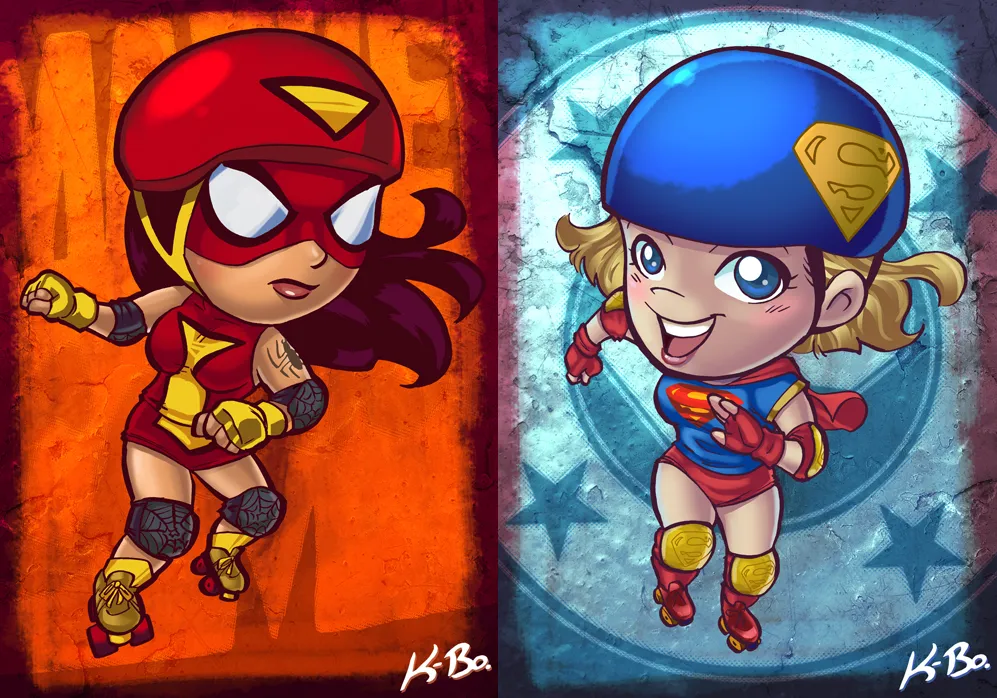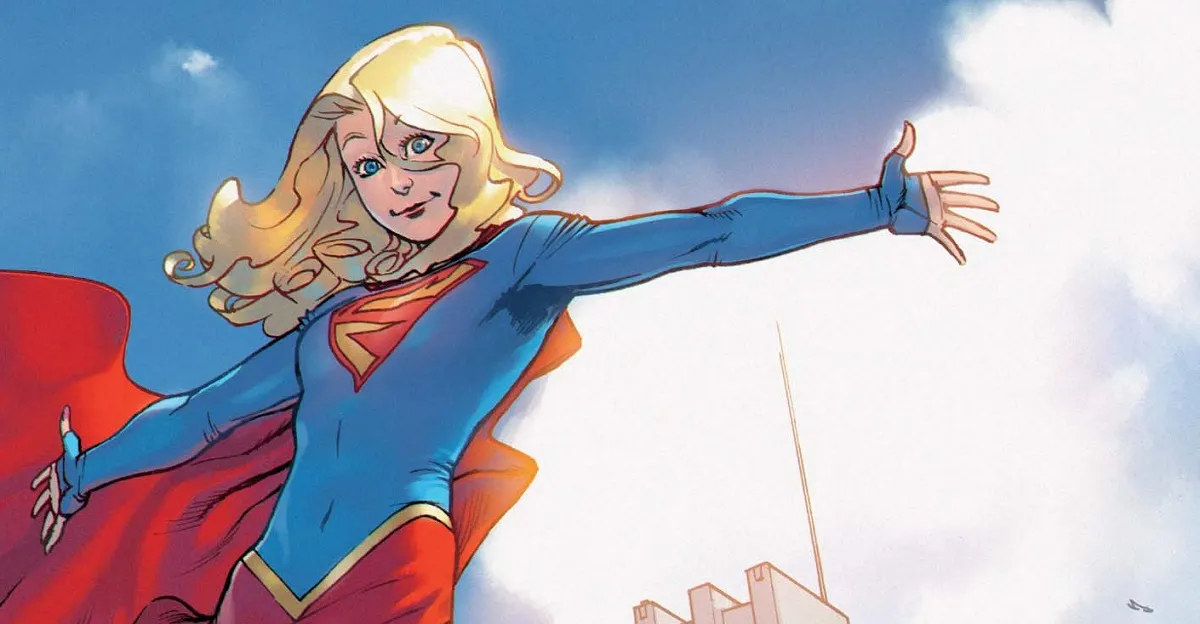There are, of course, some amazing examples of well-written female characters in comics. Storm, Atom Eve, Jessica Jones, and Kitty Pryde, have all managed to become identified as pure characters rather than "girl characters", which is unfortunately the least common type of super-heroine.
The most common is the Fetish Icon, like Mrs. Marvel or Power Girl, two heroes most closely identified with their bodies rather than their human qualities. More specifically, they are Girl Versions of Boy Superheroes, the most troubling genre in superhero fiction.
Hero "A" Plus Chest Equals Creativity
There is no inherent problem with spinning off a female version of a male character.
In theory, it can provide an instant relationship with the reader and firmly establish a new hero in their respective superhero universe. It also provides a wealth of new stories, by taking a commercially established property and allowing it to movie in different directions.
It, of course, rarely works out that way. More often than not the new female character becomes a cynical representation of a human rather than a fully-drawn character.
She is only how she can be explained in a sentence: for example, Superman, but a girl.
The First Case: Supergirl
When Supergirl first appeared in Action Comics #252 in May 1959, it was for both noble and ignoble reasons. Superman Group Editor Mort Weisinger wanted a new concept for the Superman universe that would spur sales even further, and the key to unlocking that was catering to a female demographic.
So the Maiden of Might was born, a Superman stand-in who dealt with issues faced by a teenage girl (from the point of view of a 1950s white male, of course).
As reprinted in the two volumes of Showcase Presents: Supergirl, the stories actually manage to work a little. They are pure silver age bombast, with a new version of Kryptonite introduced monthly and giant robots seemingly a recognized minority population. Yet Superman's cousin Kara manages to be her own character, with only the same powers as her male counterpart.
Even if the problems presented as normal for young girls were basic at best, there was at least a good faith effort to show what it would be like to be a female, teenage alien with vast superpowers.
As time went on, Supergirl stories became less and less about what made her unique, and more about printing another Superman comic every month without appearing to flood the market.
Peter David's late-nineties Supergirl series is basically the lone blip on the radar, with the Supergirl character mostly relegated to a second-in-command Kryptonian rather than a worthy solo hero.
Spider-Girl: From Cynical to Success
One of the more interesting Girl Version of a Boy Superhero is Marvel Comics' Spider-Girl, until very recently the star of her own eponymous series.
At first glance, May Parker is incredibly poorly thought out. Her origin is just the same as her father's (the original, modern Spider-Man), and she largely follows his pet themes of guilt and redemption.
Somehow, Creator Tom Defalco took that editorial remit and made it work, crafting a compelling look at the basic tenets of the Spider-Man mythology. For Peter Parker, his time as Spider-Man was always where he shined brightest.
Yes, he constantly felt the burden of responsibility that came with his power, but his real life was so soul-crushingly average that Spider-Man became his greatest quality.
Spider-Girl is the opposite. When readers meet May Parker, before she learns she is the daughter of Spider-Man and has inherited his powers, she has an idyllic teenage life. She is popular and athletic, has a large circle of friends, and a functional family dynamic. She is, in essence, everything that Peter Parker wasn't.
The Spider-Girl stories are then the purest version of Spider-Man's motto: "With Great Power, Comes Great Responsibility." Peter's major sacrifice comes initially with the death of his Uncle Ben, but his adventures of Spider-Man are an escape from the ongoing depression of his life.
May, on the other hand, sacrifices a dream life every time she puts on the Spider-Girl costume. Due to her unwanted responsibility as a hero, she is forced to give up friendship, love, and her future simply because if she doesn't people will die.
Spider-Girl works so well because she manages to inform upon the themes and stories of her predecessor while being an entirely different character... in such a way that being a female doesn't define her. She's a realistic female superhero, complete with all the interesting issues that brings up, while remaining a beautifully written character.
The New Age of Female Superheroes
It shouldn't be so hard to deliver good female characters. It really shouldn't matter what gender a character is, because every character deserves to be handled with the same level of thought and care.

As bad as it's been in the past, recent comics have shown there is still hope. New Supergirl writer Sterling Gates has spent his entire run trying to define Kara as her own character without needing the Man of Steel.
Creator owned titles like Invincible and Powers have female leads and supporting characters that have become incredibly popular, and manage to exist without the artist constantly showing their chests and underwear.
We may never achieve complete gender equality for super-heroines, but at least now fans of intelligently written female characters have somewhere to go.





